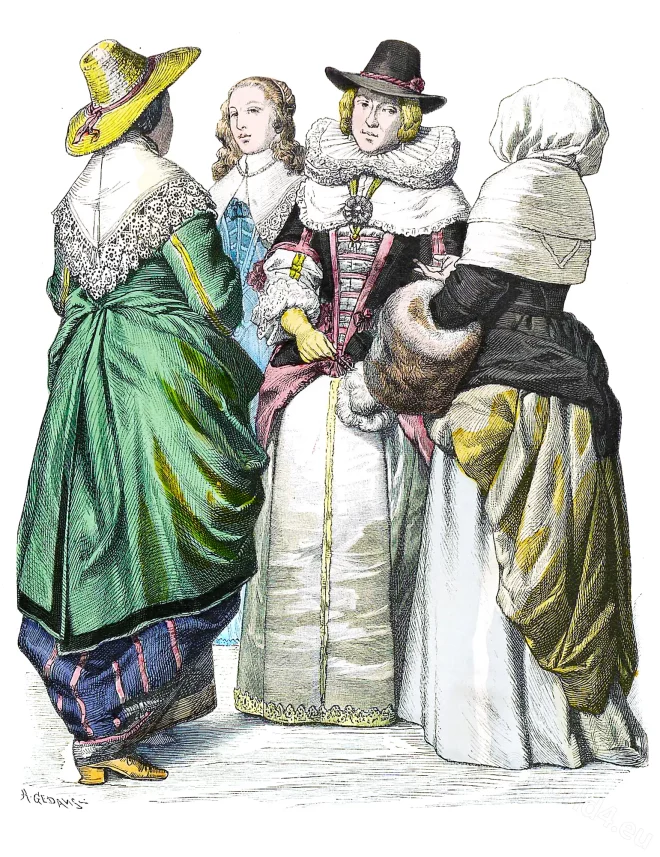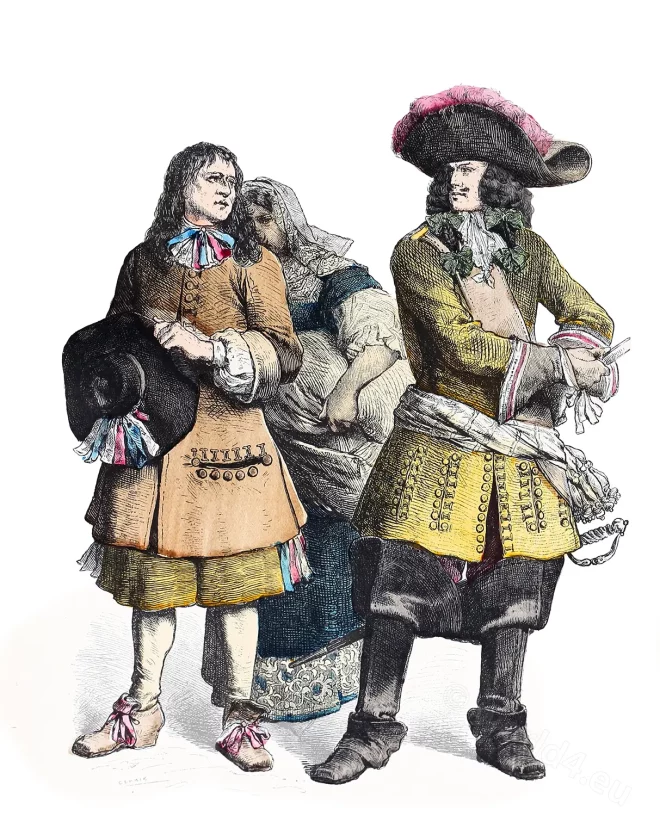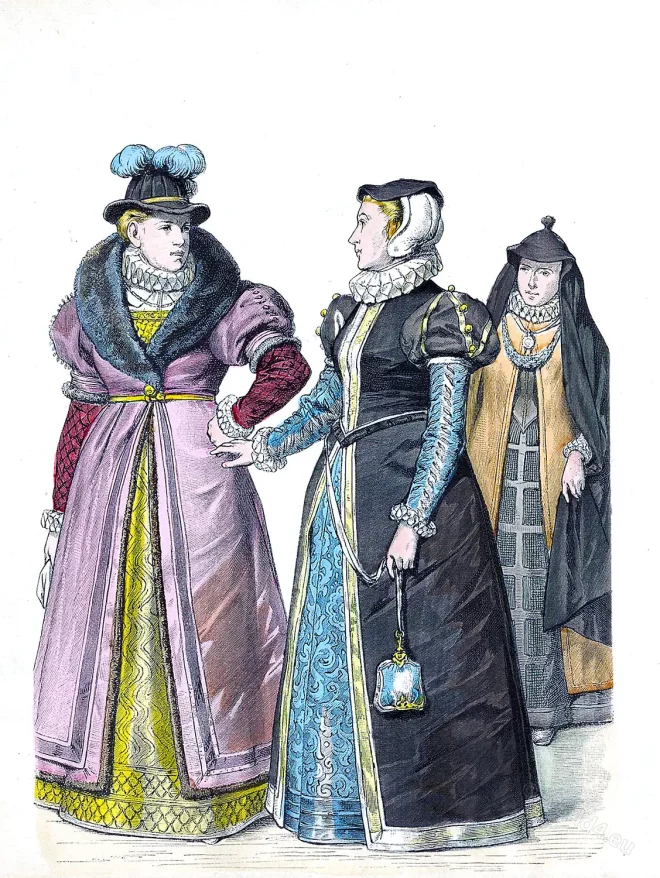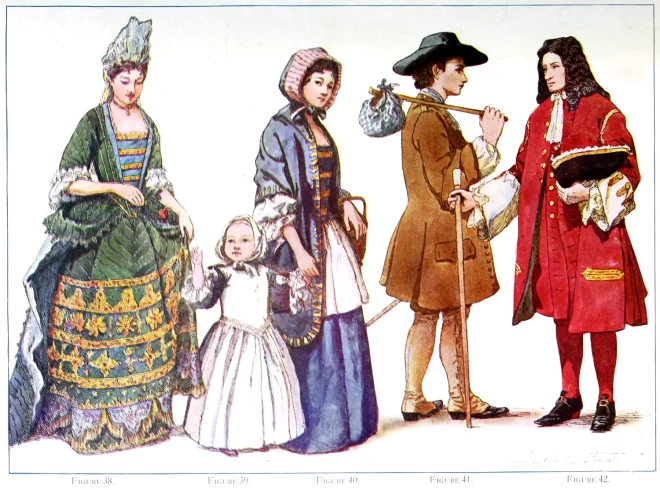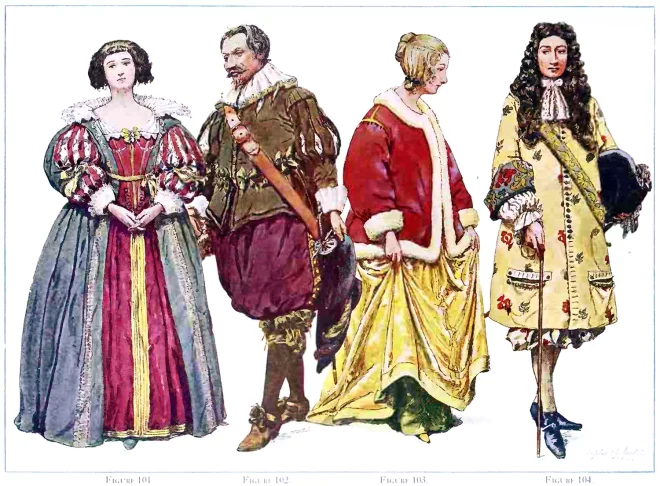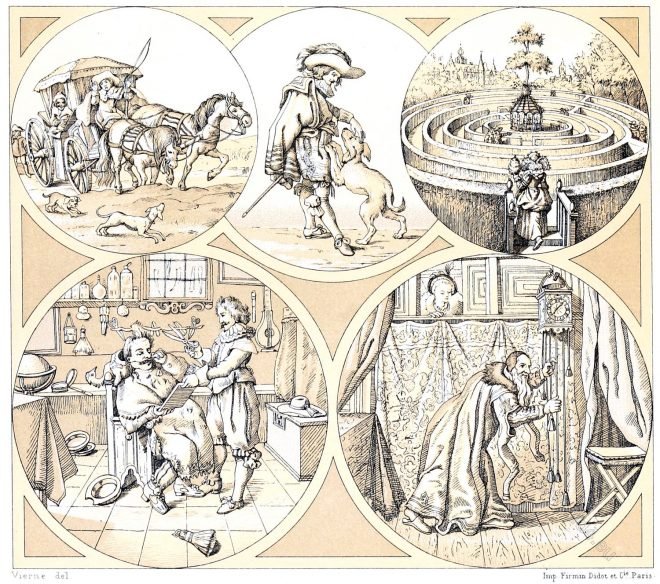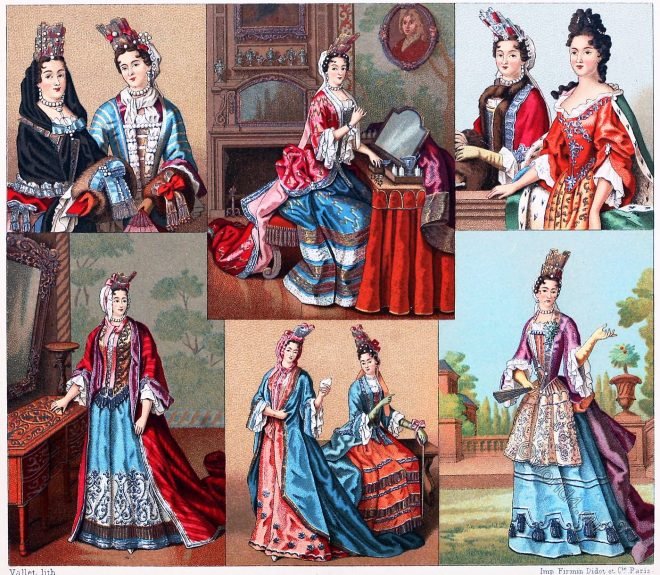On the history of costumes. Hundred and Fourth Sheet. England. XVIth and XVIIth century. Münchener Bilderbogen No. 1180. Fashion in England in 1640. Citizen woman. Lady in the street. Lord-Manor’s… Read More
Tag: Baroque fashion
London 1590. Merchant and merchant’s wife.
Costumes of a Merchant and merchant’s wife. London 1590.
France. Peasants. Gendarme on horseback c.1680.
Last third of the XVIIth century. Reign of King Louis XIV (1643-1715).
Costumes of distinguished women. London 1590.
On the history of costumes. Fashion history. Baroque period. London 1590. Distinguished women.
Fashion during the reign of James II, William and Mary, 17th c.
Costume of a lady of quality, tradeswoman, gentleman, worker and child, 17th century.
Citizens of New Amsterdam during the 17th century
Historic dress in America 1640-1686. Dutch lady. English gentleman. A patroon.
The silhouettes of the seventeenth century.
The disappearance of the hoop in the early years of the seventeenth century caused a change in the outline of the costume worn by the woman of fashion.
Court Toilets & Ceremonial Robes. France 16th, 17th century.
History of Costume by Auguste Racinet. Costumes of the nobility in the time of Henry IV of France. 16th, 17th century. Court Toilets & Ceremonial Robes.
Types from the distinguished, bourgeois and mercantile world of the 17th c.
Netherlands 17th century. The coach. The hedge labyrinths. Types from the distinguished, bourgeois and mercantile world.
Female fashion. The Capote. The Muff. The Baskine. Reign of Louis XIV.
Female fashion. Second half of the reign of Louis XIV. The Capote, The Muff. The Fontange. The Baskine. The lace apron. The House Dresses.

